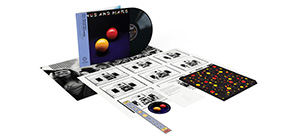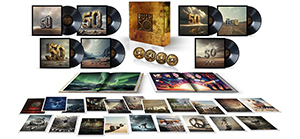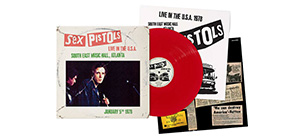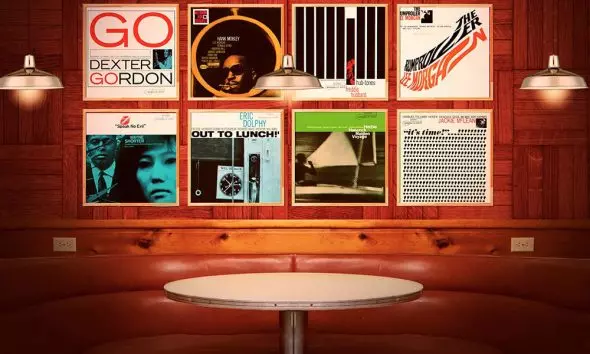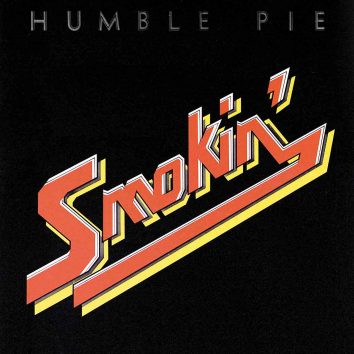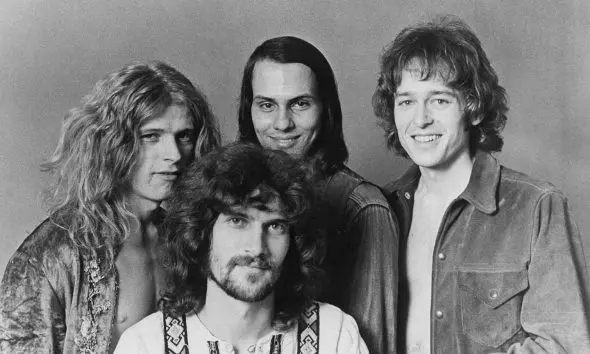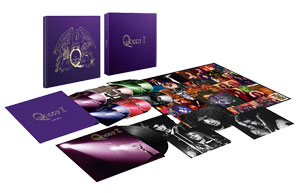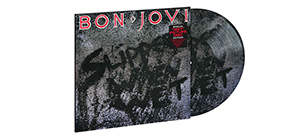Reentering the Ring: Marvin Gaye’s Return to the Stage in 1974
The performance of a singer at his peak, when he was one of the biggest singers in the world.

It had been a long time.
Recording superstar Marvin Gaye had not toured for more than four years. Once dubbed the Prince of Motown, he made a seismic effort at the beginning of the 1970s to break clean from the confines of the detail-oriented and all-encompassing Motown system. He stopped singing the company’s professionally written songs, looked for his own management, withdrew from non-stop performing and surrounded himself with people who would follow his own visions of creativity.
Marvin made the right move. His historic triumvirate of records that followed—What’s Going On (1971), Trouble Man (1972) and Let’s Get It On (1973)—changed the face of modern music by inserting politics, sex and compositional complexity into Black pop. With these records and their accompanying hit singles, Gaye reaffirmed his relationship to his Black audience in the first part of the decade while also ushering deeper forms of soul into mainstream markets.
But he did this using records instead of live shows. Hampered by stage fright and the tragic death of his famous duet partner, Tammi Terrell, Marvin had sung in public only a handful of times since the end of the 1960s. One was a command performance on May 1, 1972, at the recently opened Kennedy Center in his hometown of Washington, D.C. during a series of events surrounding “Marvin Gaye Day.” Another occurred in late September that year in Chicago at a benefit for Jesse Jackson’s Operation PUSH, a performance that was included in the 1973 film Save the Children. Marvin Gaye shows were extremely rare when he announced his return to the stage the following year. Most fans could barely remember the last time he played live.
This period in Gaye’s history is the subject of a new reissue campaign from Motown/UMe to celebrate the 50th anniversary Marvin Gaye Live!, the historic album that documented the singer’s return to performing in a concert at the Oakland-Alameda County Coliseum in January 1974. Listeners can now hear the album in its original form as well as the complete show for the first time, and experience the entire event in Dolby® ATMOS.
Listen to the digital deluxe version of Marvin Gaye Live! now.
Marvin’s path back to the stage was fraught. Always mercurial and impulsive, he had barely finished the work needed to complete Let’s Get It On. Its booming sales obscured the fact that he had few ideas for future material. Playing live would help to promote his records and extend their longevity on the charts. It would also allow Gaye to provide his thousands of fans with an unforgettable experience and himself with some much-needed capital.
Marvin also knew his limitations. He was better in the studio. The subtlety and intimate texture of his voice was one of the features that made him so successful, but these qualities did not always translate to standout live performances. After a half-decade of retreat, he had lost most of his stamina and had grown scared to sing in front of his fans.
“You don’t expect a man to come back after five years and give a perfect show. You have to make allowances.” he told Rolling Stone later that year. “It’s like Muhammed Ali coming back to the ring.” It was even more serious than this, however. Gaye had lost his mental edge in the intervening years and was unable to envision himself as a stage musician. According to Marvin’s brother Frankie, it was “as if he has developed this phobia about performing.”
Preparation for the show
A proper Marvin Gaye return to the stage was trumpeted in Bay Area newspaper advertisements in mid-October 1973: a show at the Oakland Coliseum on a bill with Bobby Womack. But Gaye got cold feet and quietly withdrew from the event before it happened. Feeling indebted to the show’s original backers—local singer Wally Cox and record retailer Mel Reid—he then agreed to another Oakland date early the next year. This one would stick. “I knew I had to come down the mountainside for someone,” Gaye told biographer David Ritz, “so it might as well be for Wally.”
It was a good time to reenter the public eye. Gaye’s music was flooding the airwaves, blasting from car stereos and grooving on hi-fi systems all over the world during the 1973 holiday season. “Come Get to This” and the Let’s Get It On LP were both still at peak popularity. He had two single releases scheduled for the first weeks of 1974: “My Mistake (Was To Love You),” his second featured duet track with Diana Ross, and “You Sure Love To Ball,” taken from Let’s Get It On.
A new January 4 date for Gaye’s return to the stage was announced the week before Christmas. This created an ambitious timeline. Advertisements needed to appear in local newspapers and a backing band and orchestra hired and rehearsed. Motown made plans to record the event for a live album, which added a layer of logistical complexity. Posters appeared around town advertising a “‘Let’s Get It On’ Concert,” revealing a bill that included Nick Ashford and Valerie Simpson, the Motown songwriting duo and producers who were then touring behind their debut album on Warner Brothers. There would also be a celebrity fashion show and after-party at the local Oakland Hilton Inn available to VIP ticket holders. Tickets were available at Mel Reid’s own record shop and other local black businesses like Coleman’s Records and Edward’s Clothiers. They sold like hotcakes.
But Gaye now had more to prove. In his most recent one-off performances, he looked and acted much like he had throughout the previous decade, donning a beard and a formal, black tuxedo while an all-star Motown band took center stage. Surely, he was aware that the concert industry was shifting to large venues and the look and feel of these performances was now heavily infused with the lights, fashion and glamour of the 1970s. No more sleek suits and hip shakes. An earnest return to touring would require a significant update to his live show.
In Oakland, the extravagance began with the band, only a few whom were named in the album’s eventual liner notes. It was a core group led by longtime Motown arranger Gene Page, whose main players, drummer Ed Greene and guitarists David T. Walker and teenaged Ray Parker, Jr. were the mainstays of Page’s then-current studio employer, Barry White. On keyboards was a West Coast staple of Motown sessions, the Crusaders’ Joe Sample. Most notable in the lineup was archetypal Motown bassist James Jamerson. The group also included two percussionists, a full horn section, four background singers and a full orchestra of nearly 40 pieces.
Marvin upped the ante with a new look. His fresh costume featured the trademark red beanie and denim outfit from the cover of Let’s Get It On with some fantastical modifications, including copious bedazzling and a pair of shiny silver platform boots, better to be seen from anywhere in the arena. Motown dispatched its art director, Jim Britt, to capture several images with Gaye in this sparkling garb on stage and in a later photo session. Britt was no stranger to Gaye, having taken the cover photographs for Trouble Man, Let’s Get It On and Diana and Marvin. He was the perfect person to capture the visual aspect of the event.
Motown’s audio documentation was extensive. The company’s creative director, Suzanne de Passe, hired engineer Bill Schnee, who had come to her attention with his recording of Barbra Streisand’s top 20 album, Live Concert at the Forum. Schnee and a team of engineers that included Ken Caillait, Myles Weiner, Chris Chigaridas and Bill Broms ran a 16-track remote unit provided by Wally Heider Studios.
Schnee’s assignment was as chaotic as the event. “Suzanne simply said, ‘Rehearse in the afternoon, get the sounds and go,’” says the veteran engineer and producer, who would later go on to win a GRAMMY® Award for Steely Dan’s Aja. “It was messy. It was tough to hear the strings over the rhythm section, and the horns played loud.” He left a small note on the tape box next to the string part that read, “LOTS OF LUCK!”
Marvin Gaye Live!
After a full evening of warm-up acts, Gaye finally came to the stage. Wally Cox introduced him to the audience in the old-school style. “It is a pleasure and a privilege for me to bring this gentleman on,” his rising voice bellowed through the massive public address system. “Five years this man has been absent, a man that has become a legend in his own time.” Reid intoned as if he was introducing a prize fighter. “Ladies and gentleman, can I get nice round of applause for the fabulous, Fantastic, MARVELOUS, Marvin Gaye!” The band then began a slow, arrangement on the “Trouble Man” theme as Gaye entered to thunderous applause.
“Trouble Man” was a challenging opener. There were issues with the stadium sound and it was difficult for Gaye to project the falsetto melody over the energetic and massive band. He had to rely on “ows,” “aws,” and “woos” to cut through the mix. He had Joe Sample relinquish the piano bench so that he could take a solo.
Marvin’s brilliance emerged as the set wore on. A segue into a medley of songs from What’s Going On showed the large ensemble at its best. “Flying High (In The Friendly Sky)” offered a spacious reading of the song, allowing for a smooth transition into a brief, radically transformed rendition of “Mercy Mercy Me (the Ecology).” He created an entirely new palette of words and melodic material for the hit song, offering only a hint of the original lyrics. “Inner City Blues (Make Me Wanna Holler)” saw the band hit its stride. The arrangement drew far more heavily from the What’s Going On original with Jamerson leading the charge on bass and Sample filling the gaps on electric piano.
Gene Page cued the Trouble Man melody as a transition into Gaye’s next song, the ballad “Distant Lover.” The slow melody was a ruse. “It’s one of my favorite themes,” Gaye told the audience before his monologue drifted into a story. “Some people told me, you know, that when you’re in love . . . and your lover leaves you . . . and you got nobody,” he said softly, before segueing into the opening phrase of “Distant Lover”— followed by a hair-raising wall of several thousand high-pitched screams. Gaye was in his element.
Now inspired, the vocals became intricate, with Gaye’s falsetto leading the song’s slow grind. The ecstatic screaming throughout the performance reinforced his decision to return. “The crowd was the loudest I’ve heard ever at any concert,” remembers guitarist Ray Parker, Jr., “so loud it scared all of us.” The response prompted Motown to release the performance as a single.
Until recently, most fans didn’t realize that a performance of “Come Get to This” followed in the set. It had previously been offered only as a standalone bonus track. The tempo kicked off slightly slower than the now-famous recording of the tune and the band reached full strength toward the end. The vibe slowed again for “Jan,” the only new song debuted in the concert. Dedicated to his new romantic partner, Janis Hunter, it offered Gaye another opportunity to venture into ballad territory.
A subtle modulation at the end of “Jan” built anticipation for the next tune. Would it be the recent, massive hit “Let’s Get It On?” Although the band hinted at the now-famous theme, Gaye instead pulled out “Keep Getting It On,” its reprise. He repeated the lyric and melody lines that he had improvised in the recording studio, but added a slow ending that took on the tone of a revival meeting. This was what the audience had come to hear.
From the advertisements to the introduction, Marvin had been hailed as a superstar who sang the hits “What’s Going On,” “Trouble Man” and “Let’s Get It On,” with no acknowledgement of his previous decade of hit-making at Motown. Some of this had to do with him shedding the confines of the Hitsville system and placing more value on his self-produced work. There also was also a strain of concern about making him seem like an old man. Of course, fans wanted to hear Marvin’s famous songs of yore. The solution to was to deliver a half-dozen 1960s hits in a medley arranged and conducted by Leslie Drayton, a founding member of Earth, Wind & Fire whom Marvin had met through Melba Liston.
“He wanted a different vibe from what Gene Page was going to do,” Drayton recalls. “I was excited, like, come on, yeah, let’s do it!”
It did not start well, revealing the razor-thin precariousness of the entire evening. The band was not quite together and had to start over. Gaye bypassed the conductor to give the cues, telling the audience that has was “determined to get through this medley.” “Let me count this one off,” he said aloud, before finally launching the band into a suitable rendition of “I’ll Be Doggone.” This interaction would all be cut out of the later LP.
The group quickly found a funky feel and toured through Gaye’s early catalog, offering small sections of “Try It Baby,” “Can I Get a Witness,” “You’re a Wonderful One,” and “Stubborn Kind of Fellow,” before settling into “How Sweet It Is (To Be Loved By You).” During a lengthy vamp the singer encouraged audience members to turn to someone next to them and exclaim, “How sweet it is!” reverting to the same monologue that he had used in his late 1960s club shows.
Marvin saved his most popular two songs for last. The audience went wild for “Let’s Get It On” amidst a torrent of screams. An anthem for the era, the crowd sang along with every word. Jamerson was on fire and the backing vocalists and orchestra added just the right support. It was the first time that Gaye had ever performed the iconic song in public.
Immediately following this rush of excitement, the band began the introduction of “What’s Going On.” Its gravity contrasted to the more wholesome and hedonistic songs that had come before. It might have been too serious. Local reviews suggested that it was a letdown after the sexual energy of the performance that came before. (Imagine an instance in which one of the first live performances of this now-iconic song was anything but a triumph.) But the song was already an anthem and the audience reception still palpable. Its poignant performance was enhanced by trombone fills by George Bohanon, who had been a stalwart of many sessions at Hitsville U.S.A and led the house band at the local 20 Grand Club.
And just like that, after a little more than an hour, Marvin was finished. He thanked the audience and before leaving expressed his typical performance anxiety, announcing apologetically, “Next time I come to Oakland I’ll have a dynamite show.” Wally Cox repeated his name several times over an evocative vamp arranged by Page, using the same cadence as a ringside announcer. “One more time for Marvelous Marvin Gaye!”
There were two significant reviews of the show published the following week, both appearing in local newspapers. Oakland Tribune critic Peter Cowan gave the concert a rave, praising the repertoire, performances and crowd. “He could have come on in a bathrobe,” he wrote, “and they still would have adored him. They were his.” Writing for the San Francisco Chronicle, John L. Wasserman was cognizant of the show’s importance to the community. “Marvin Gaye’s return was not a concert, it was an event,” he wrote. It was, “a gathering of Black pride and star-gazers.”
Putting the record together
Motown’s multi-track tapes told a slightly different story. There was audible feedback throughout, a handful of false starts exhibited the tenuousness of the ensemble and Gaye’s vocals were often inaudible or overexuberant. It seemed that, like a fighter who had not trained properly, his voice did not have the stamina for an hour-long concert.
Following protocol of “live” recordings of the era, the concert would be carefully edited and mixed to make a product worthy of Gaye’s name in the marketplace. This process began in late March. The singer worked with longtime Motown engineer Cal Harris to sort through material. It appears that Marvin initially hoped to create a double-album, which would have been in keeping with his peers who had issued extended live releases, like Curtis Mayfield, James Brown, Isaac Hayes and Bill Withers.
In the end, Gaye and Harris opted for a shorter record with several enhancements. They inserted a few vocal overdubs and added a piano part. The backing vocals were augmented with more parts, many by Gaye himself. In the end, most of the lead vocals stayed true to the original concert. After several weeks of editing, they curated a single LP that cut five performances from the original show: “Flying High (In the Friendly Sky),” “Inner City Blues (Make Me Wanna Holler),” “Mercy Mercy Me (the Ecology),” “Come Get to This,” and “Keep Getting It On,” as well as Marvin’s acknowledgement of the orchestra and the presence of co-writer Ed Townsend.
The LP running order was split into three sections, indicated on both the label and the jacket: “The Beginning,” “Fossil Medley” and “Now.” Motown created a lavish die-cut package, in keeping with the Diana Ross Live at Caesar’s Palace LP that was simultaneously in production. Marvin was showcased in his iconic sliver platform boots in the album’s gatefold, an image secretly shot by Jim Britt in his photography studio several weeks after the Oakland show when the album designers needed more graphics.
The album’s release and legacy
Marvin Gaye Live! was released on June 19, 1974 and shot up the charts. It was a souvenir of a significant event and the electricity of the crowd in performances like “Distant Lover” spurred sales. By September it rose to No. 1 on the Billboard Soul LPs chart and top-10 on the mainstream Top 200. Motown even ordered a quadrophonic mix, allowing listeners to experience the live environment using this early form of spatial audio, issuing it exclusively on 8-track tape. The album went on to earn Marvin a GRAMMY® nomination for Best Male R&B Vocal Performance.
Modern listeners interested in exploring this release now have more opportunities than ever. To celebrate the 50th anniversary of Marvin Gaye Live!, the original nine-track album mixed by Marvin and Cal Harris in 1974 is now on all streaming platforms—it had been only available exclusively at one of them—while a previous ‘expanded edition’ mixed by the original recording engineer Bill Schnee has now been rebuilt as the full show in a new Deluxe Edition. Both versions are also available in a stunning new Dolby® ATMOS mix by Scott Frankfurt. The multiple versions of this historic live event show how Gaye was at his best while in high pressure situations. He had a knack for the late-round knockout.
Listen to the digital deluxe version of Marvin Gaye Live! now.
Ironically, the success of Marvin Gaye Live! forced Gaye back into the hard journey of a public-facing musician in working mode. It was everything that he had been ducking for the last four years. “I’m an underground person,” Gaye told Dennis Hunt in one of the only interviews he granted in the fall of 1973. “That’s why I don’t really want any publicity.” But exposure beckoned. He sat for an interview with legendary Bay Area television journalist Belva Davis, which was broadcast in early February on the local program All Together Now. The next week he visited Soul Train, during which he lip-synced “Come Get to This” from the television stage and then, in another now-iconic moment, took off his jacket and walked into the crowd to perform “Let’s Get It On,” surrounded by adoring dancers in their finest duds. Several extended interviews with Tim Cahill during the period were later incorporated into a Rolling Stone feature accompanied with new photos by Annie Leibovitz. Shadowing Gaye in Oakland, Cahill witnessed “one of the most chaotic backstage scenes” he had ever seen.
Gaye also enacted a full-scale return to performing. Beginning with a show at the Los Angeles Forum in May, he then flew to Jamaica for a series of performances with special guest Bob Marley & the Wailers. With Drayton taking over as bandleader, a tour began in August and nearly 50 dates were completed before the end of the calendar year, including an Atlanta event that was filmed for the nationally syndicated television program The Midnight Special. Perhaps his prominent performances were during a week-long run at New York’s famed Radio City Music Hall. Back on the West Coast by the end of December, Marvin Gaye’s last concert of 1974 was back at the site where it all started: the Oakland-Alameda County Coliseum. It had been nearly a year since his initial comeback and the cycle did not show signs of stopping.
This is why Marvin Gaye Live! is such a special album. It showcases Gaye’s ability to create a blissful and rapturous concert environment complete with a stellar musical ensemble, a positive and unified audience and otherworldly vocal performances. The record captures the singer at his peak, when he was one of the biggest singers in the world. It shows why he was the champ.
Listen to the digital deluxe version of Marvin Gaye Live! now.




